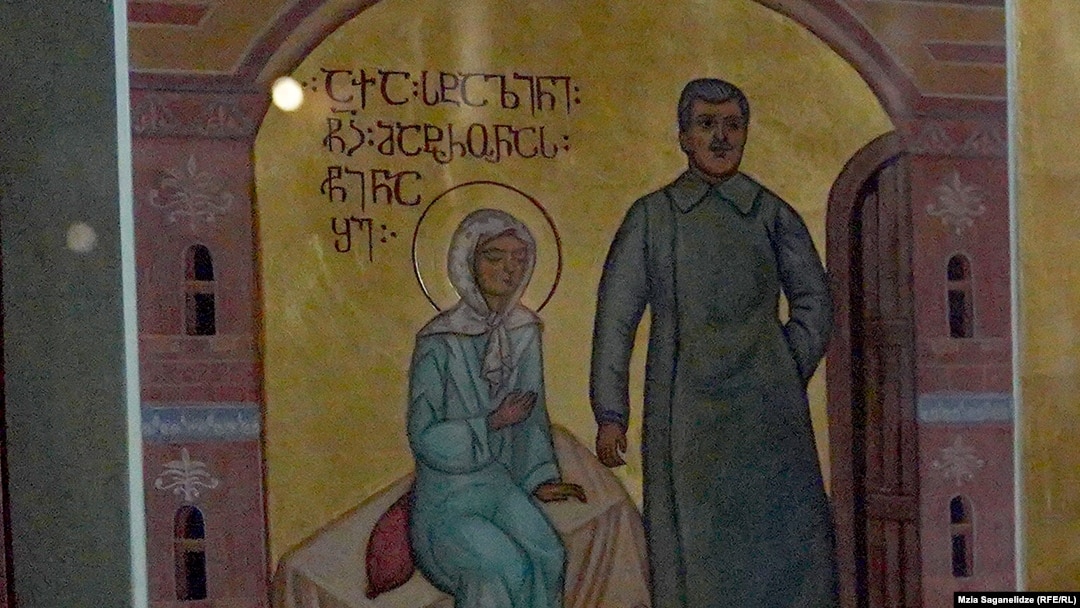TBILISI -- Amid an ongoing controversy over the image of Soviet dictator Josef Stalin on an icon in Tbilisi's Holy Trinity Cathedral, the Georgian Patriarchate said on January 11 that the donors of the icon must change the part portraying Stalin, warning that if they don’t, the Georgian Orthodox Church will make the change itself.
The icon, donated to the church by leaders of the Alliance of Patriots of Georgia, a right-wing populist party, features a painting of St. Matrona of Moscow on its main panel, which is surrounded by scenes of her life on smaller panels, including one showing Stalin, an avowed atheist, standing next to the mystic and saint of the Russian Orthodox Church who died in 1952.
The patriarchate said in a statement that “due to the lack of evidence proving that J. Stalin and St. Matrona ever met, such a meeting has not been included in the canonic text about her biography.” Because a meeting between them has not been recognized by the Russian Orthodox Church, it is “necessary to change the depiction of the mentioned episode.”
The Georgian Patriarchate stressed on January 11 that, while it is allowed to place any person's image on an icon depicting the life of a saint, it had not been proved that Stalin ever met with Matrona.
It said in general, according to canonic regulations on iconography, not only a saint can be portrayed on an icon, but also people related to real stories linked to the saint. This includes rulers and ordinary people, heretics, oppressors of the Christian belief, and even those who tortured the saint.
But this does not mean that the icon “glorifies or attributes some merits to them, but such details reflect unquestionable facts related to the saint's life," the patriarchate’s statement said.
Your browser doesn’t support HTML5
She Threw Paint On A Religious Icon Showing Stalin. Then A Mob Arrived.
A day earlier, an angry mob in Tbilisi swarmed the house of activist Nata Peradze after she posted a video online showing blue paint splattered on the icon in question in the Holy Trinity Cathedral. The crowd threatened to "carry out what the state and law failed to." But police prevented a possible attack on Peradze, who later told RFE/RL that it was her who threw the paint on the icon.
Photos of the icon that started circulating in the Internet last week sparked outrage among many Georgians, who condemned the appearance of the image in one of Georgia's main churches of a Soviet dictator who brutally oppressed religious clerics and religion in general while in power.
Despite massive campaigns of political killings and the destruction of churches during his rule from 1924 until his death in 1953, Stalin, who was an ethnic Georgian, is still viewed with pride by many Georgians. Several public monuments to the communist dictator remain standing across the former Soviet republic.


